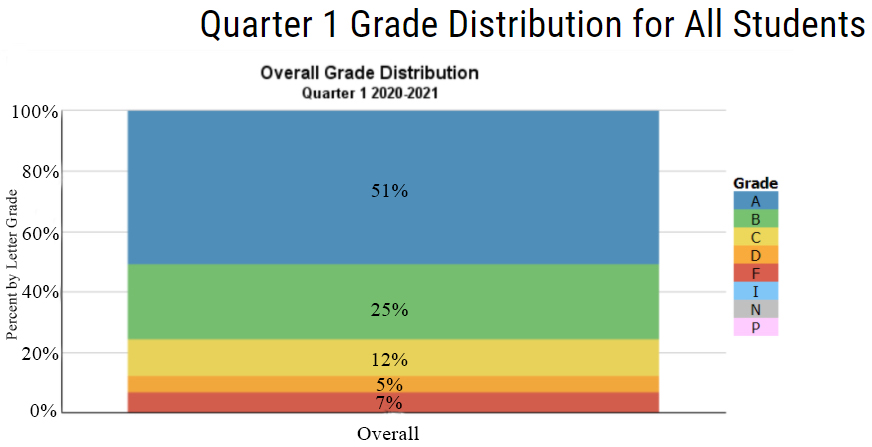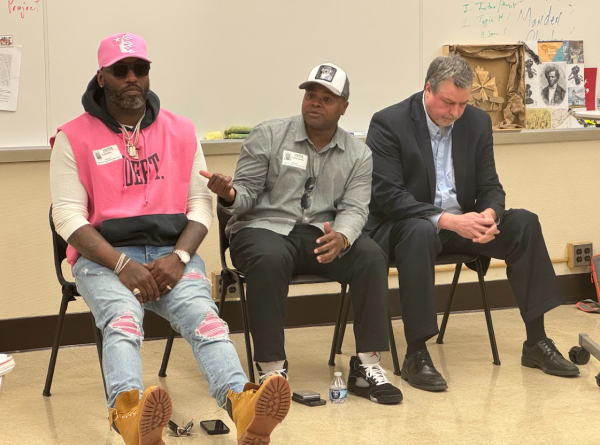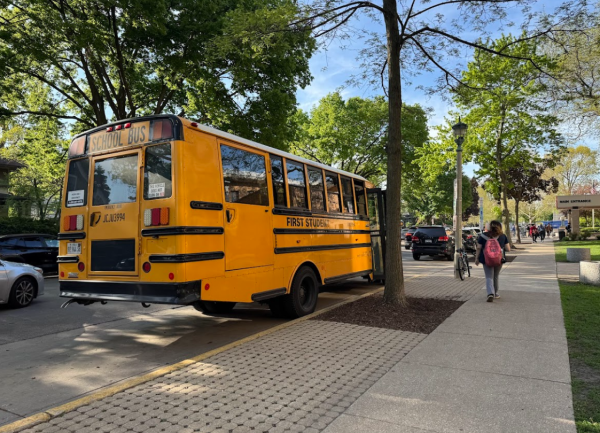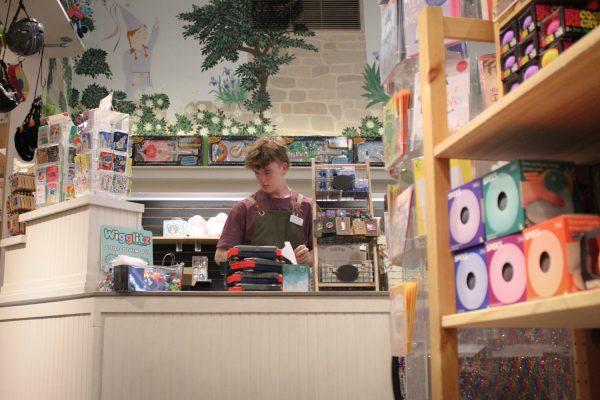Grade trends during remote/hybrid
It’s no question that the new types of learning that have arisen over the past year have presented a challenge for a lot of students in terms of their grades. Grade data for OPRF backs this up.
According to data compiled by the school, during semester one of the previous school year, (2019-2020) only 1496 grades were D’s or F’s. In semester one of this year, a total of 2025 grades were either D’s or F’s, a 35% increase from the previous year.
While this increase is certainly disturbing, it is not quite as bad as trends reported in other Illinois schools. In the extreme case of high schools in Sycamore, Illinois, failing grades nearly tripled during the same period.
Low grades have also been reported nationwide. In Michigan, failing grades doubled from fall 2019 to fall 2020. In the Austin, Texas school district, failing grades have increased by 70%. OPRF’s grade situation seems to be emblematic of low grades nationwide.
Kristen McKee is the Coordinator of Learning Analytics and Supports at Oak Park & River Forest High School. “You have to really think about what the circumstances of the student (are) right now. Does a student have good WiFI? Are there younger siblings running around? …All those things impact a student’s learning.”
Junior Jake Dwyer feels remote learning hasn’t been engaging enough.
“At first remote learning was fine because I thought it was just going to be for a couple weeks, but as time went on there were a lot of distractions that came up. I wasn’t able to do as well as I would in a normal school year,” Dwyer said. Dwyer says he considers himself to be a good student, and has had good grades in previous years, this year however, “I don’t check my grades anymore.”
“The biggest distraction has been my phone.” Dwyer said “It’s been hard not to look at my phone during school.”
However, Dwyer feels that hybrid learning has improved his engagement during the days when he is in school: “There has been an improvement in my engagement, but It’s only two days out of every eight, so it isn’t nearly enough time to make a significant impact.”
Danny Scholvin is a Junior at OPRF who has also been tuned out of class by his phone “My phone distracts me occasionally” Scholvin said.
In the beginning of this year, Scholvin also struggled with some technology issues, “My chromebook camera broke so that was an issue for a bit.” “I got a new one and have since had no issues.” Scholvin said.
What may surprise a lot of people is that during the second semester of the 2019-2020 school year, when COVID-19 first hit the US, grades improved from the same period the year before. Fifty eight percent of grades during semester 2 of 2020 were A’s, compared to 48% the year before. However, the school did implement a number of policies that would explain this surprising number. For example, the school made it so that students could not get a grade lower than a D. They also made it so that any assignment not submitted is marked “incomplete” as opposed to a 0. Students would also not be able to get a lower grade in the fourth quarter than they did in the third quarter.
Nathaniel Rogers is a special education teacher who in his experience, saw grades “slip tremendously” in the second semester of last year. “Students weren’t as engaged as they would have been in the in-person setting.”
When we transitioned to structured remote learning at the beginning of this school year, Rogers says “Engagement was a lot higher because now there was the expectation that you had to attend… the higher expectations definitely caused students to show up and engage more.”
Once hybrid learning was instituted, Rogers saw engagement “Skyrocket.”
“I saw a lot of students, once we went back to hybrid learning, the students who have come into the building, especially the students who I teach, have been a lot more engaged… Students were comfortable asking questions…”
The past year has been an experiment in various learning styles, but it appears that remote learning has had a negative impact on student engagement. As Rogers said, “Technology can’t substitute intrapersonal relationships.”





